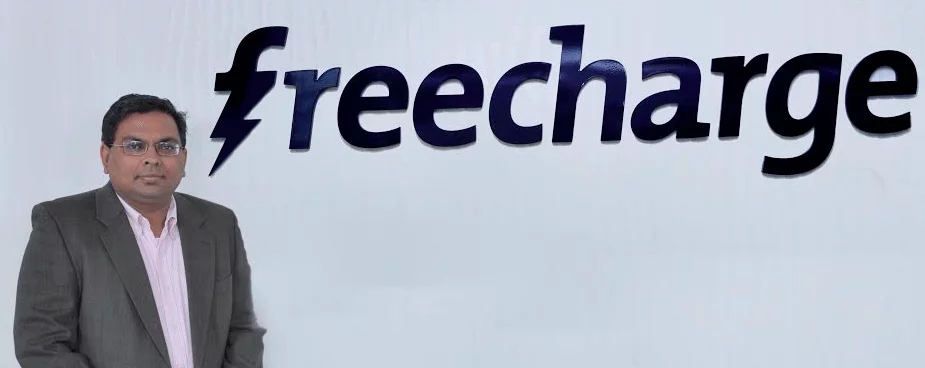Mobile wallet can be a simple way to transact since it does not involve time-consuming issues like two-way authentication at the time of transaction. However, security and limited places where they can be used are some of the problems that afflict the segment.

Freecharge has emerged as a prominent player in this segment. It was acquired by Snapdeal last year. In this interview Govind Rajan, Chief Operations Officer of Freecharge throws light on how mobile wallet is likely to evolve in the coming few years.
Since the launch of digital wallet in September 2015, you have 20 million users. You are also tracking over a billion dollars in Gross Merchandise Value (GMV). So, what are the expansion plans for this year? How many partners do you have?
Ans: We launched our wallet app last year and we have seen a massive growth. In the coming months we are focused on addressing the needs of all merchants in this country – offline and online. With the IPL as the stage, we will launch new products that aim to deliver the most reliable digital payment experience in the country.
We recently launched FreeCharge Go card – every online merchant in the country is connected to the FreeCharge Wallet, automatically. We have also introduced the FreeCharge On the Go PIN, which eliminates wait time, making transactions swifter and safer at the same time.
In the coming months we will introduce features that will bring every merchant in the country on the FreeCharge system. We plan to increase availability of digital payments to all merchants, universally, big and small at a single touch of a button.
We plan to target over Rs 20,000 Cr of GMV in the coming fiscal with a five-fold growth in our user base.
What are the major challenges facing the mobile wallet sector?
Ans: These are very exciting times. We are at the cusp of a massive change. The Trinity of JAM – will drive financial awareness literacy and movement towards digital payments.
The major challenge facing digital wallets is the lack of acceptance of digital wallets across many used cases. Digital wallets are focused primarily on online used cases. As we create a simple easy to on-board system for new merchants, used cases will also dramatically increase the salience of digital payments. Further, incentives such as the Korean model with tax benefits for digital payments will also go a long way in fostering growth.
Consumers are concerned about security. How do you address these concerns?
Ans: Security is our number 1 priority! We have deployed a number of proprietary technologies to ensure security. Our wallet has very stringent protocols on wallets velocity and hold limits, which are designed to trap and eliminate fraud. We also have a fully dedicated and independent, security team.
We are complaint with all major security standards such as PCI DSS compliance. In addition we have a strong device encryption, device identification and device fingerprinting technology to detect fraudulent transaction.
By making transactions swifter we can get consumers to adopt more secure technologies. A good example is the ‘On the Go Pin’ is our latest technology developed in-house. OTP fulfils the Reserve Bank of India's (RBI) mandate for two factor authentication, is safer than a standard static MPIN and is much swifter too. It is available instantly on the wallet, rather than a PIN thru OTP which takes and average of over 60 seconds.
Do you see India becoming "cashless" in the near future?
Ans: The cost of cash transaction is not just time, cash transactions actually cost a lot of money – estimated to be over 1% of GDP. India also has four times as much cash in circulation compared to other BRIC countries. So the time is ripe! And this change has happened in other markets as diverse as Kenya and Sweden. There is no doubt that the future of the Indian economy is cashless. In India we believe that the combination of a strong growth in smartphones, data availability along with Aaddhar based authentication will allow for seamless adoption of the digital wallet.
How is growth of 4G going to help mobile wallet industry?
Ans: 3G and 4G services are being offered at extremely affordable prices, giving a huge boost to mobile commerce. Smartphone user base has increased by 60% in the metros, but more importantly, it is the penetration in the tier 2 and 3 areas (38% in smartphone users) which is of critical importance. About 61 mn people from tier 2 and 3 use smartphones for online shopping. With 4G becoming more affordable, we expect smartphone users from these regions to adopt digital wallets.
What kind of policy support from the Government are you looking for the mobile wallet industry?
Ans: The RBI is a very forward-looking regulator. With new initiatives like the UPI and the BBPS we are well positioned as an economy to make the leap to digital payments. In addition we believe making Aadhaar based authentication easier to deliver in markets – for example through OTP, and incentives for digital payments such as tax breaks will help spur the growth in digital payments















